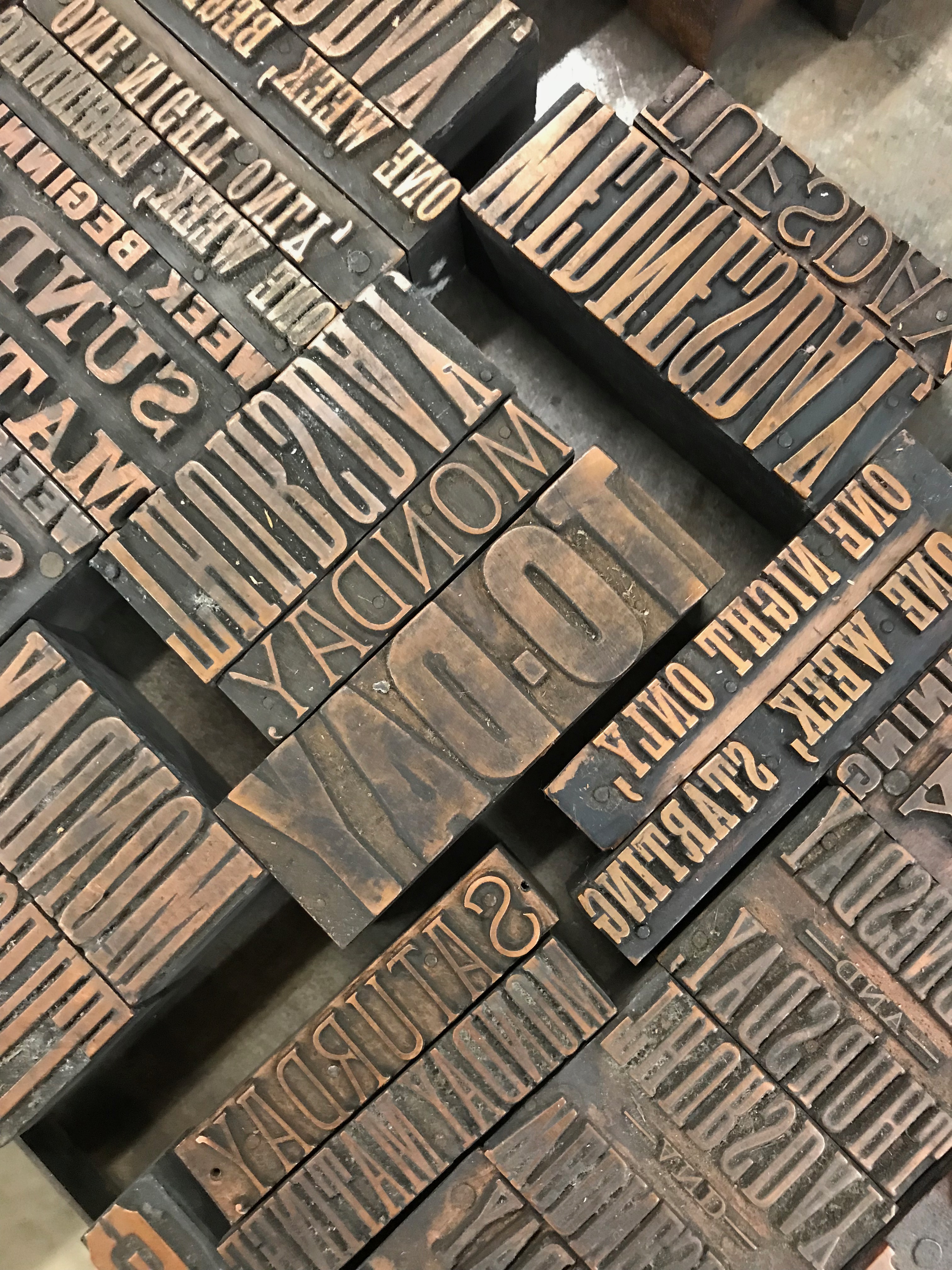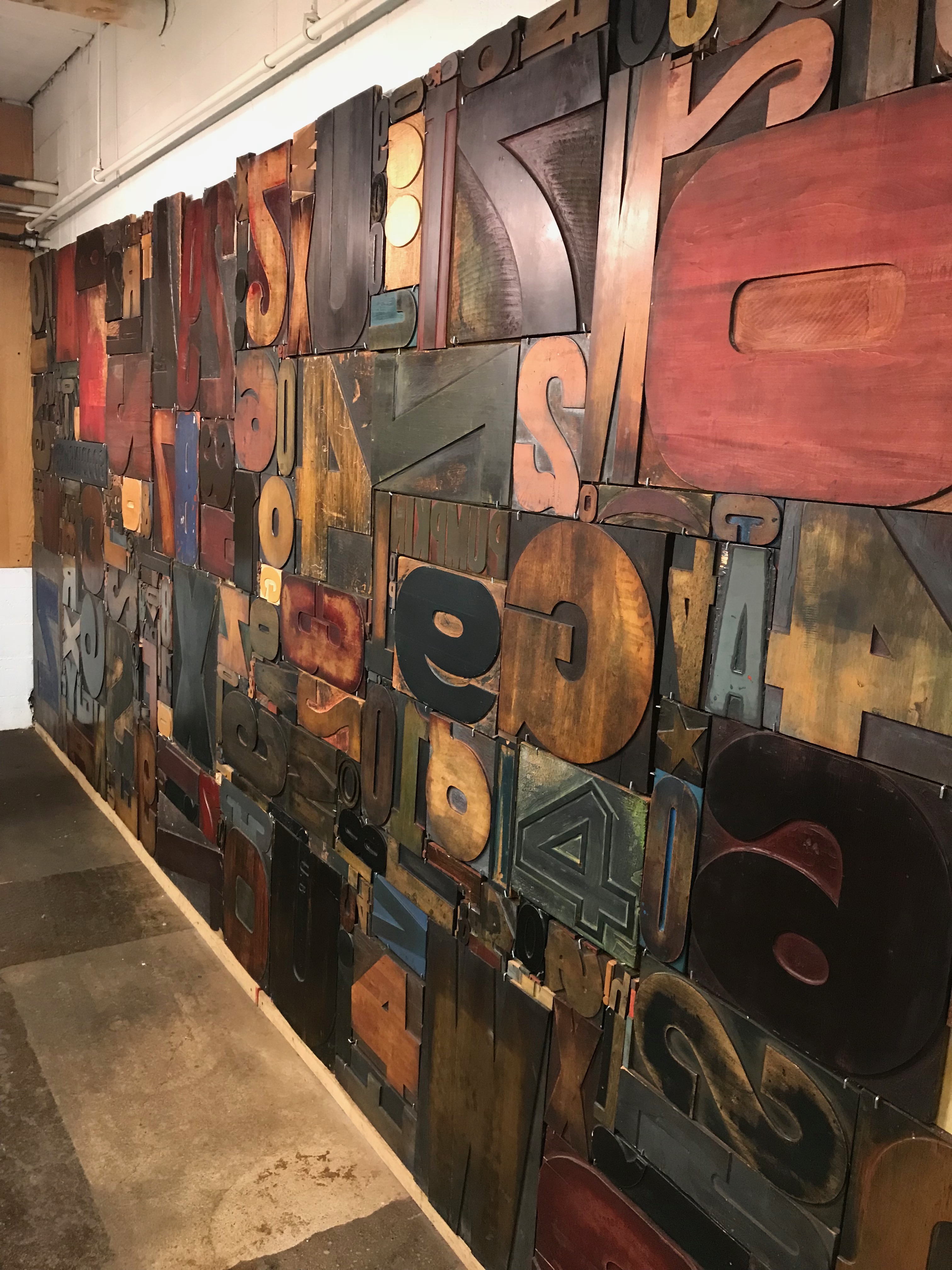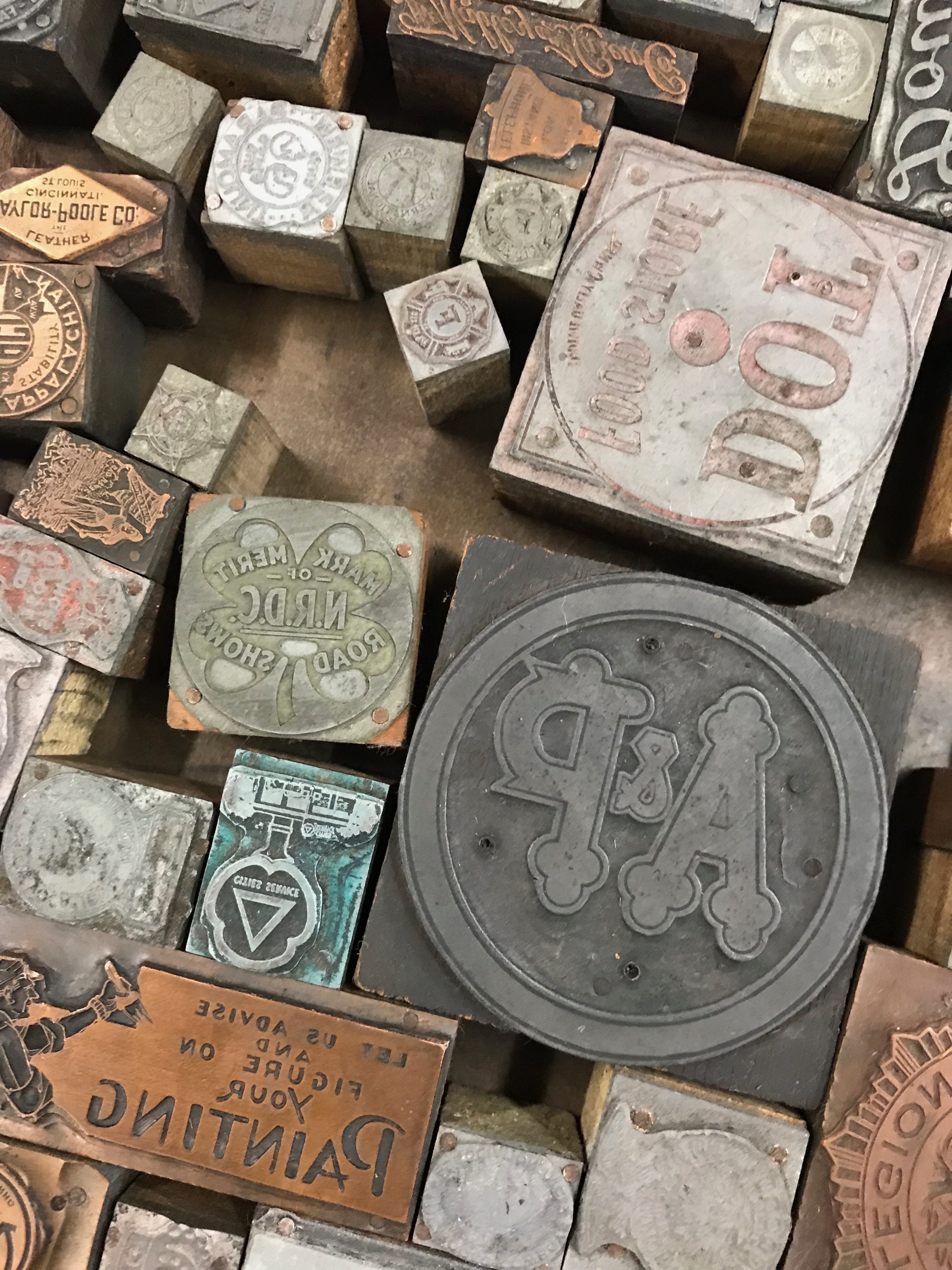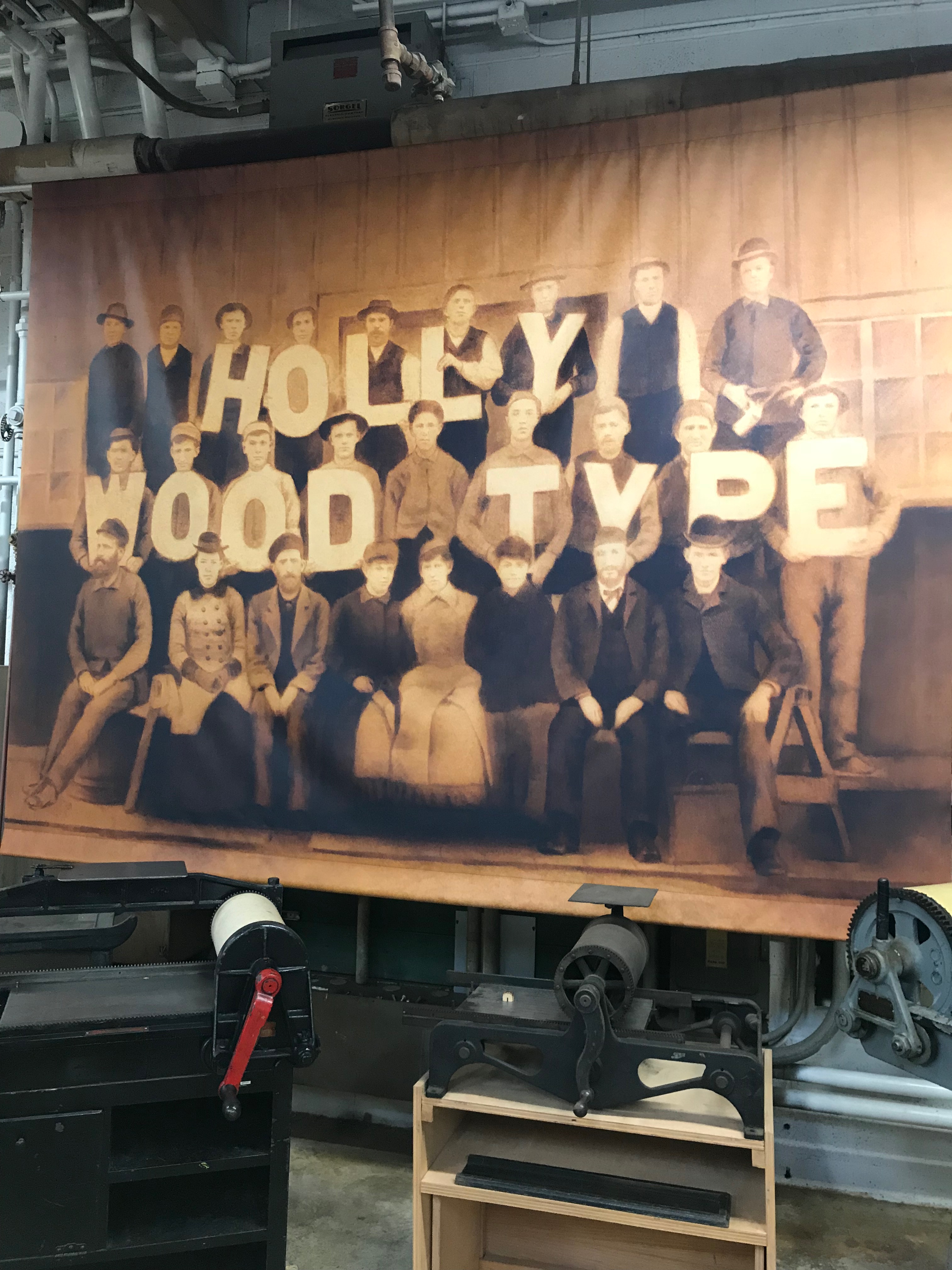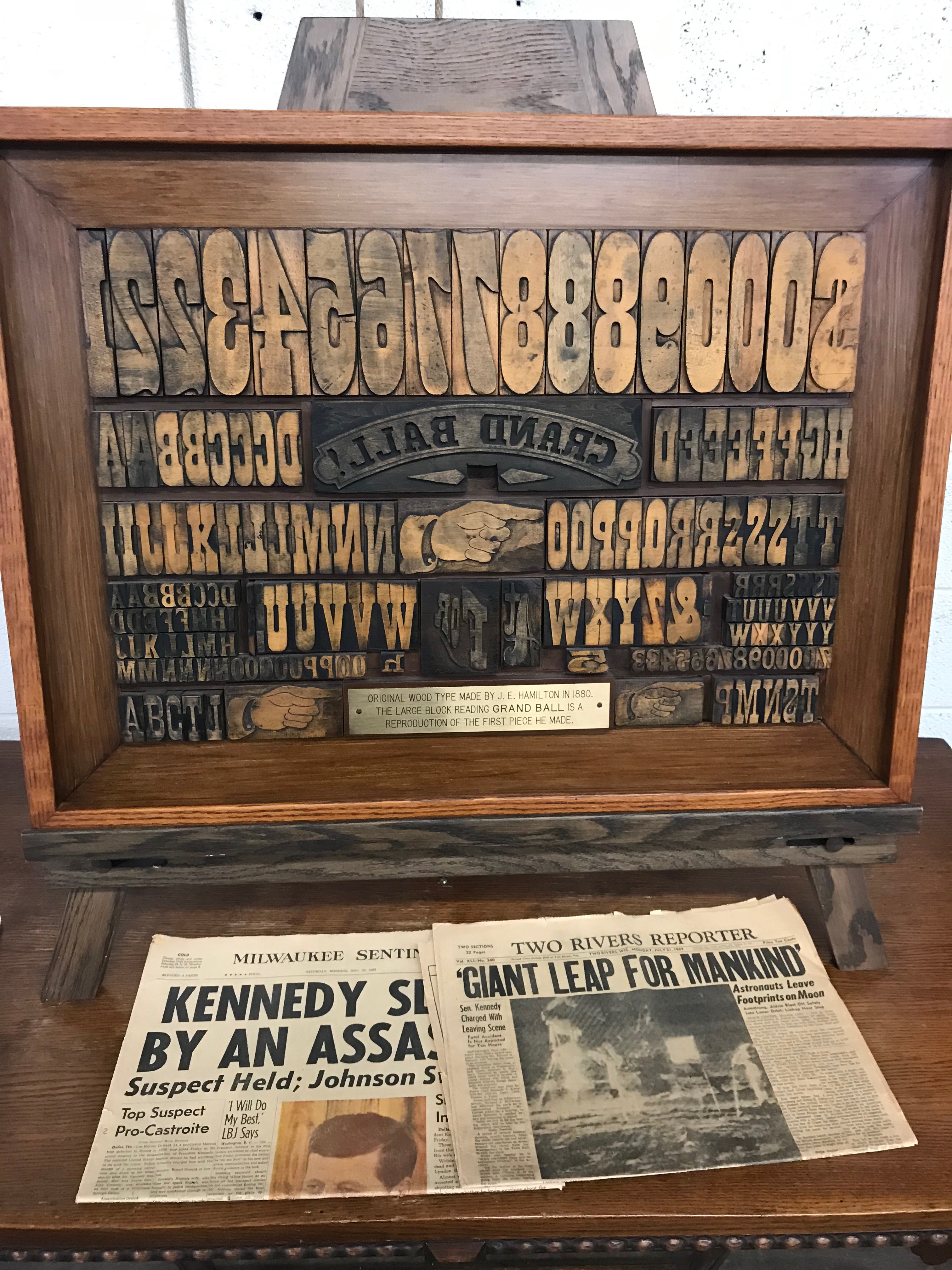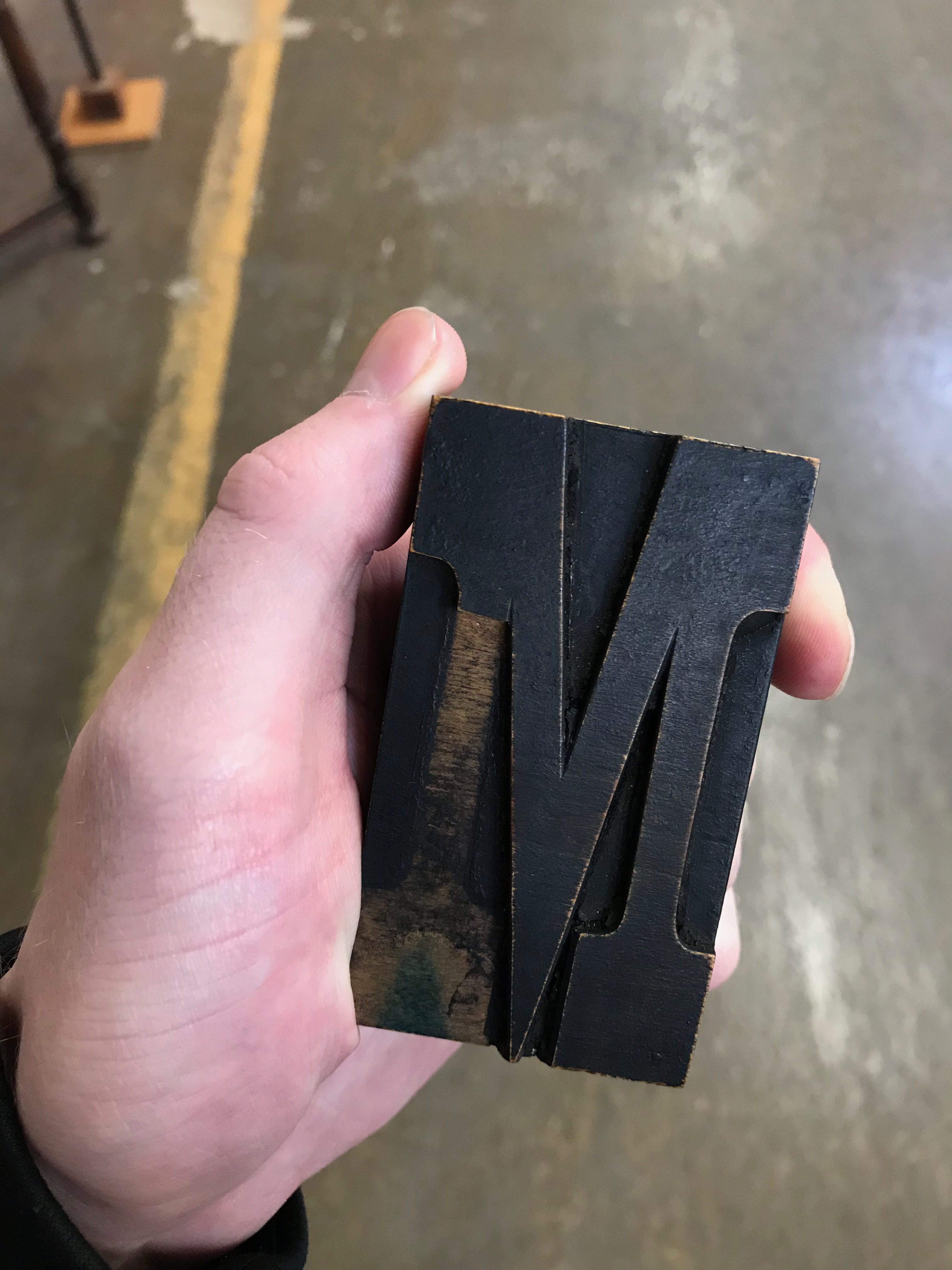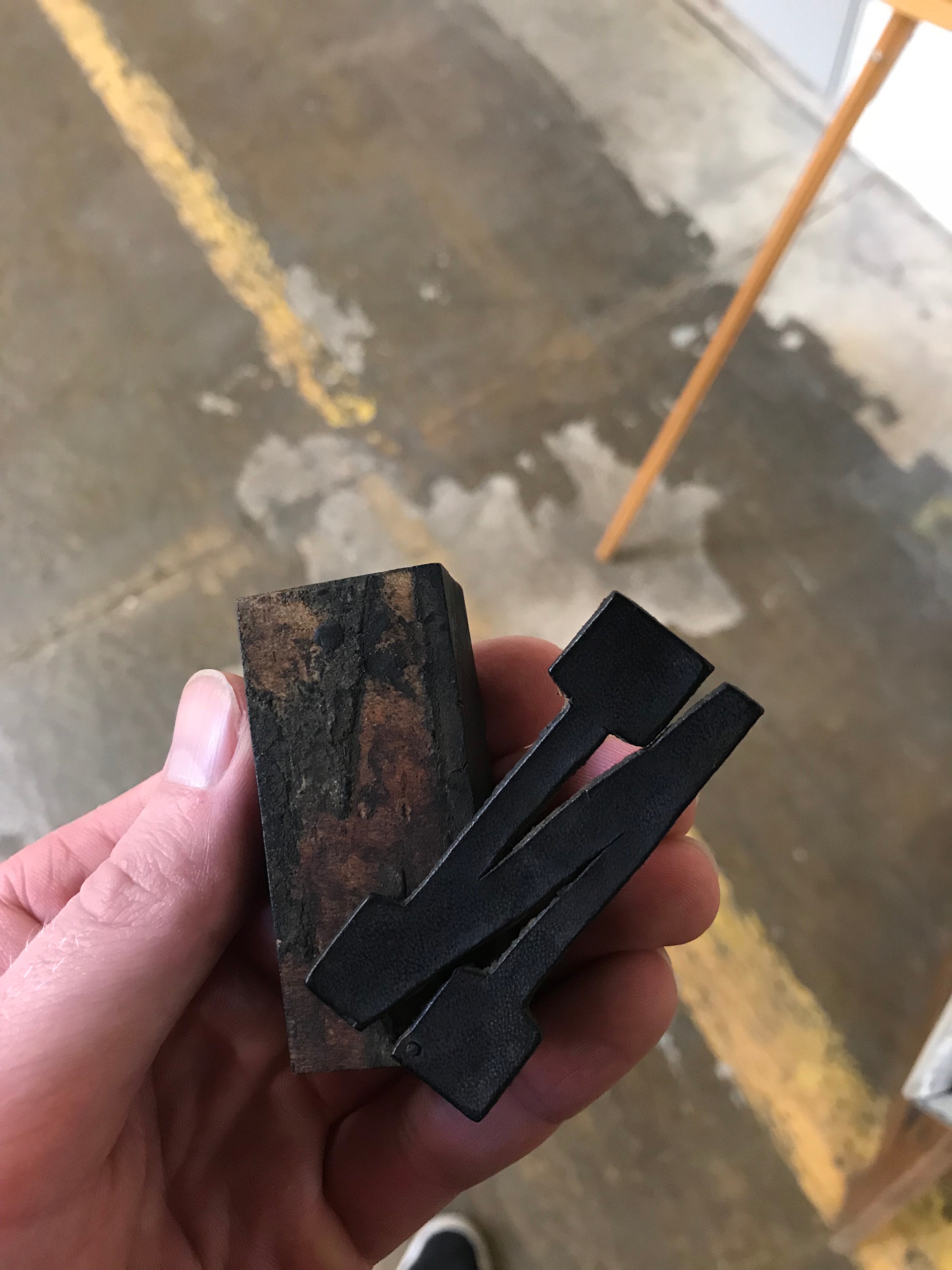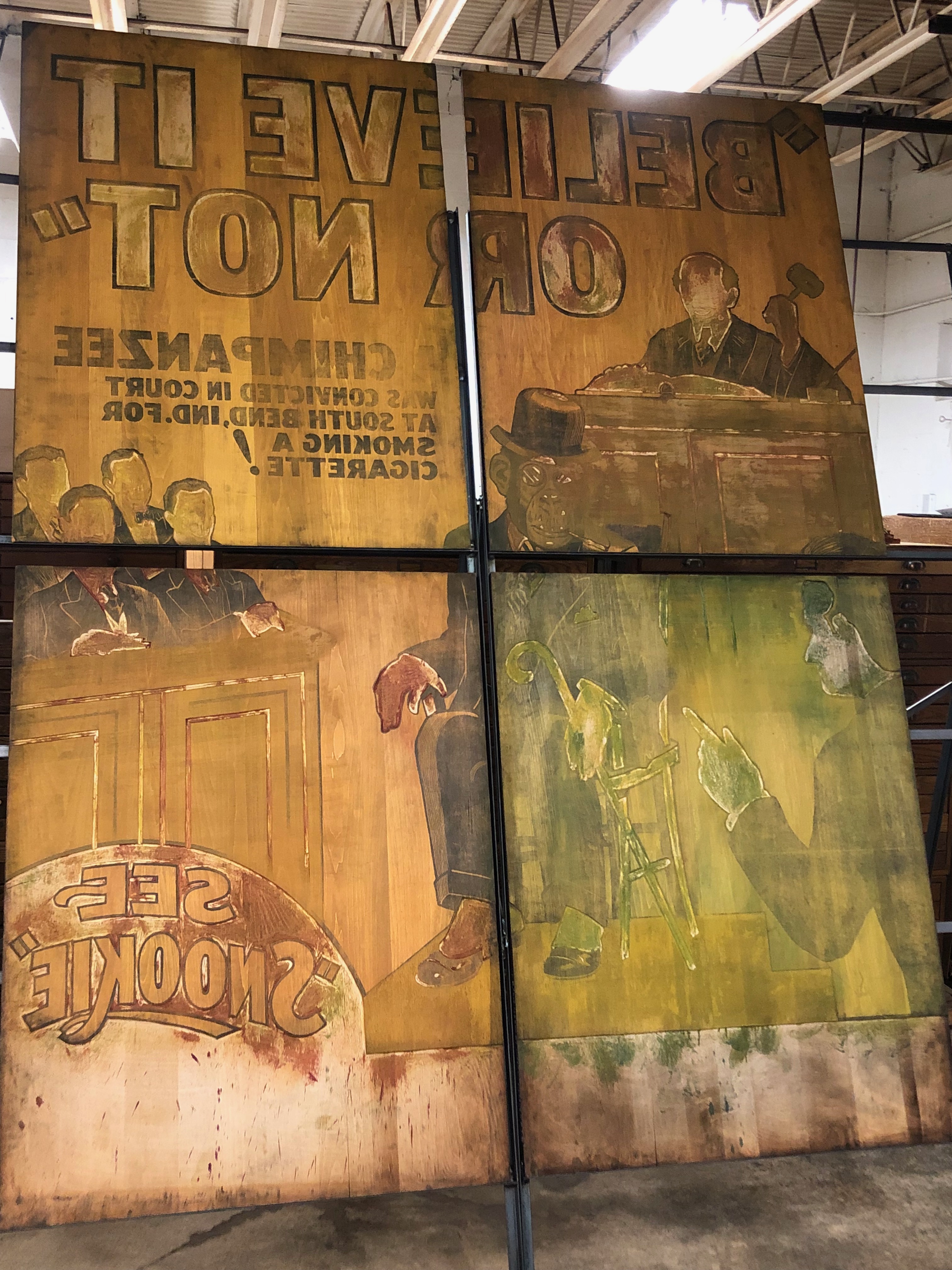Inspiration Destination: Hamilton Wood Type Museum
01/24/2019Two Rivers, Wisconsin
Along the shores of Lake Michigan, in a city split into thirds by two rivers, a true diamond sits hidden, nestled behind the veil of Americana.
Two Rivers is an exact representation of the picture I have in my mind of “Small Town America.” Everything, from its town slogan, “Catch our friendly waves,” to the town layout, the camaraderie, and it’s historical significance as the birthplace of the beloved ice cream sundae. (Really, what’s more American than this?) Two Rivers is exactly what comes to mind when I think of Americana.
To the naked eye, it would be tough to deduce that Two Rivers is world-renowned and even famous to the graphic arts and printmaking community. Americanized printing, as we know it, would not exist if it were not for one thing, one building, one company, and one movement turned into one museum.
Hamilton Wood Type, in small-town Wisconsin, houses the largest type collection in the world. I had to see it for myself. Before getting to the what, I’d like to touch on the how. How did Hamilton become a printmaking titan, and how did the museum come into being?
The History
Think of the “Wanted” posters that filled the towns in classic, John Wayne-style western movies with gunslingers, cattle wrangling, bandits, and over-the-top heroics. Posters that were filled with their chunky western-style lettering, rendered with rich, vibrant ink. These are as recognizable as the movies and the era itself. The posters are a great representation of something produced through wood type means.
Wood type (and really type making/printing) was born out of necessity. Before our digitalized electronic age type making and printing was the only way to express the messages of the day without relaying the message personally.
A true American Capitalist, J. Edward Hamilton knew that necessity breeds invention. After a variety of jobs, and finally figuring out ways to better production through the use of steam power and mechanics, he founded the J.E. Hamilton Holly Wood Type Company in 1880.
Within 20 years, it had become the largest manufacturer of wood type in the United States, beating out many larger-scale competitors. Hamilton’s product was made of holly wood and pine – abundant, durable and inexpensive in Wisconsin. (Later on, with increased production, they would eventually switch over to rock maple wood.)
Their first project and eventual big break came when William Nash, editor at the Two Rivers Chronicle, needed large scale decorative type to print posters. Nash, out of time and unwilling to order type from Chicago, gave Hamilton a sketch of the type he wished for. Hamilton then hand cut the wood type on a foot-powered scroll saw on his mother’s back porch. The rest is graphic design history.
Growth exploded throughout the Midwest in the mid 19th century. Eventually, the company expanded its product line to include furniture, drafting tables, and a variety of other appliances still made today under the name Hamilton Laboratory Solutions.
The Museum
The museum itself is a good size—more than 40,000 square feet, according to their website, housing over 1.5 million pieces of wood type. Sadly, the original production building was sold and razed recently. The building currently housing the museum still has a vintage, timeless vibe. In both viewing and picking up some of the pieces, I could feel the wear of time yet also appreciate the timelessness of this creative art form.
The second you pass through the front doors, a rich smell of cut wood hits your nose. It feels like stepping into a time capsule—a capsule unbound by wood type alone. The museum also includes an array of advertising pieces ranging from the 1930s to the 1970s, along with all of the equipment needed for the production of the wood type pieces themselves and the means to use them for print.
Recently, the Museum held a “quick fundraiser” and was able to acquire some wood-cut Ripley’s Believe It Or Not pieces; the were my personal favorites from the visit. Ripley’s being a name and book series I think nearly every kid has some sort of fascination or ties to, it was especially cool to see original wood cuts of some of Ripley’s earliest printed pieces.
Hamilton is more than a museum. Filled with a small dedicated staff and outlets to learn about printing and wood type, the museum bridges the gap between old and new to become a place of ideation and exploration. Naturally, it also offers a widely stocked gift shop filled with original prints, posters, cards, apparel, etc.
Some of my other favorite pieces from the day were produced in-house. Collaged on the walls, you can see some “recent” prints made in the museum. Seeing all of the different fonts, illustrations, treatment styles, and colors used in the printmaking process behind each hanging poster was an eye-opening experience. The Harlem Globetrotters piece (another favorite) used multiple plates to layer up colors and textures, creating a timeless style that’s nearly impossible to render with such depth using a computer.
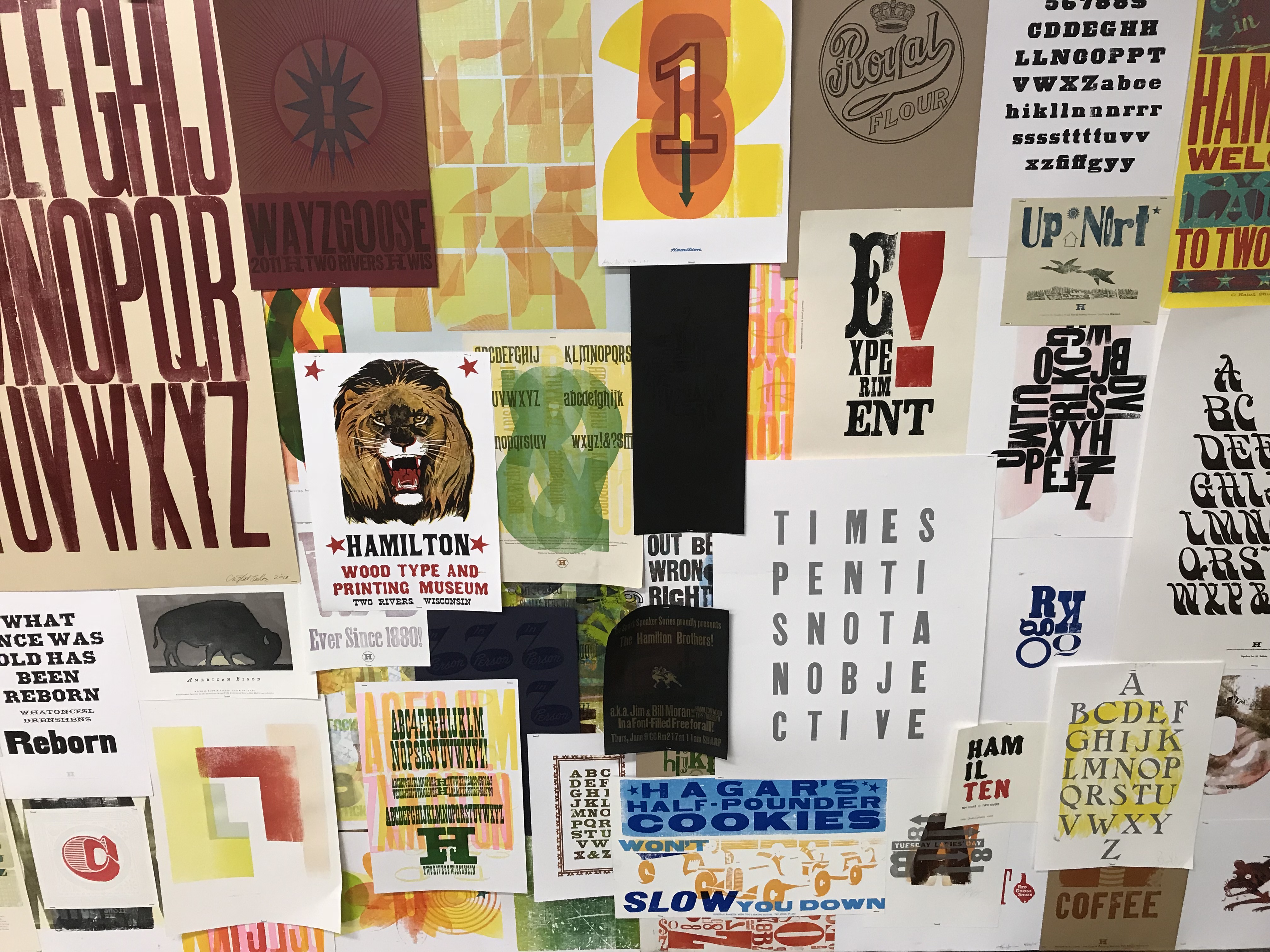
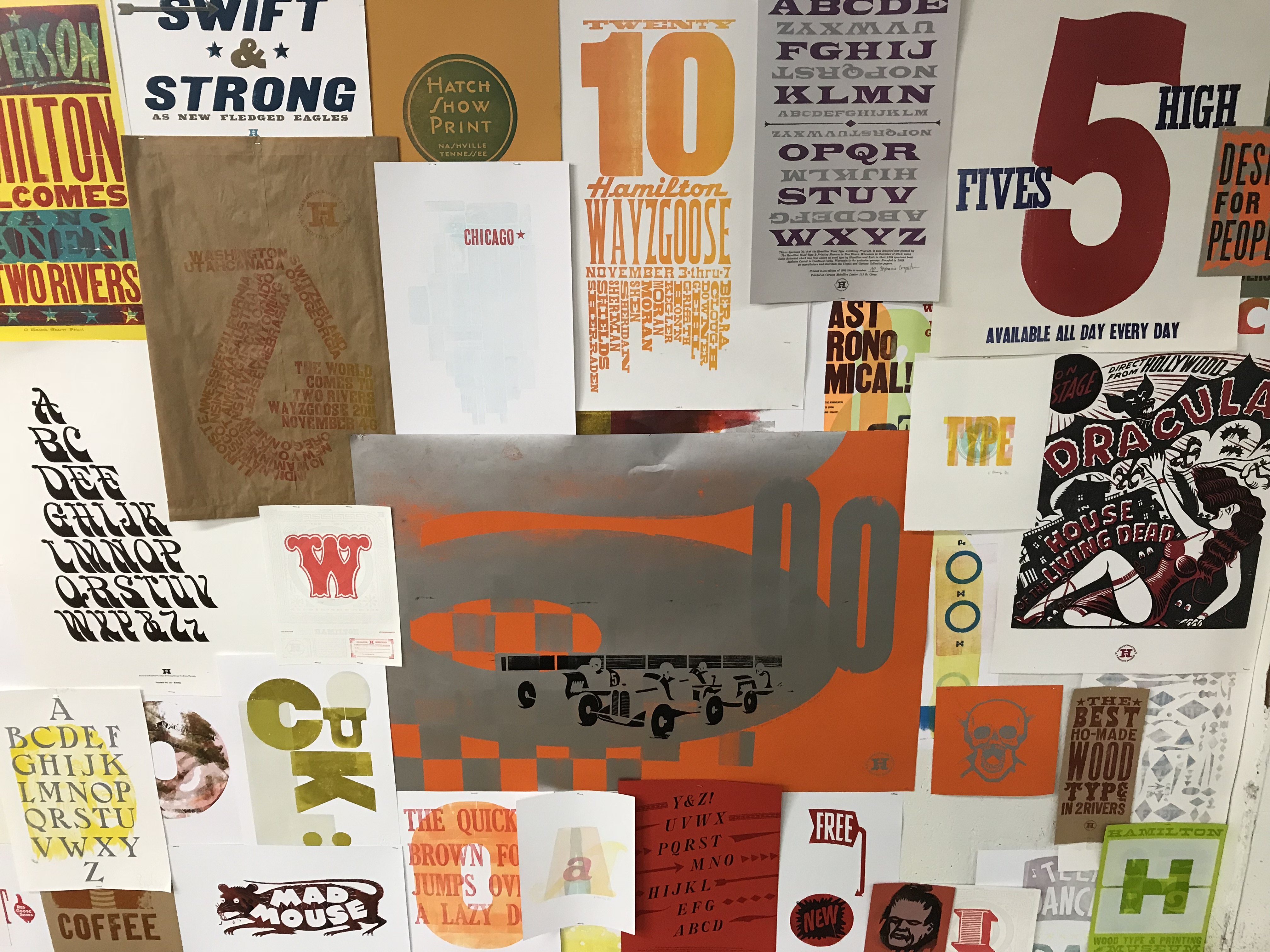
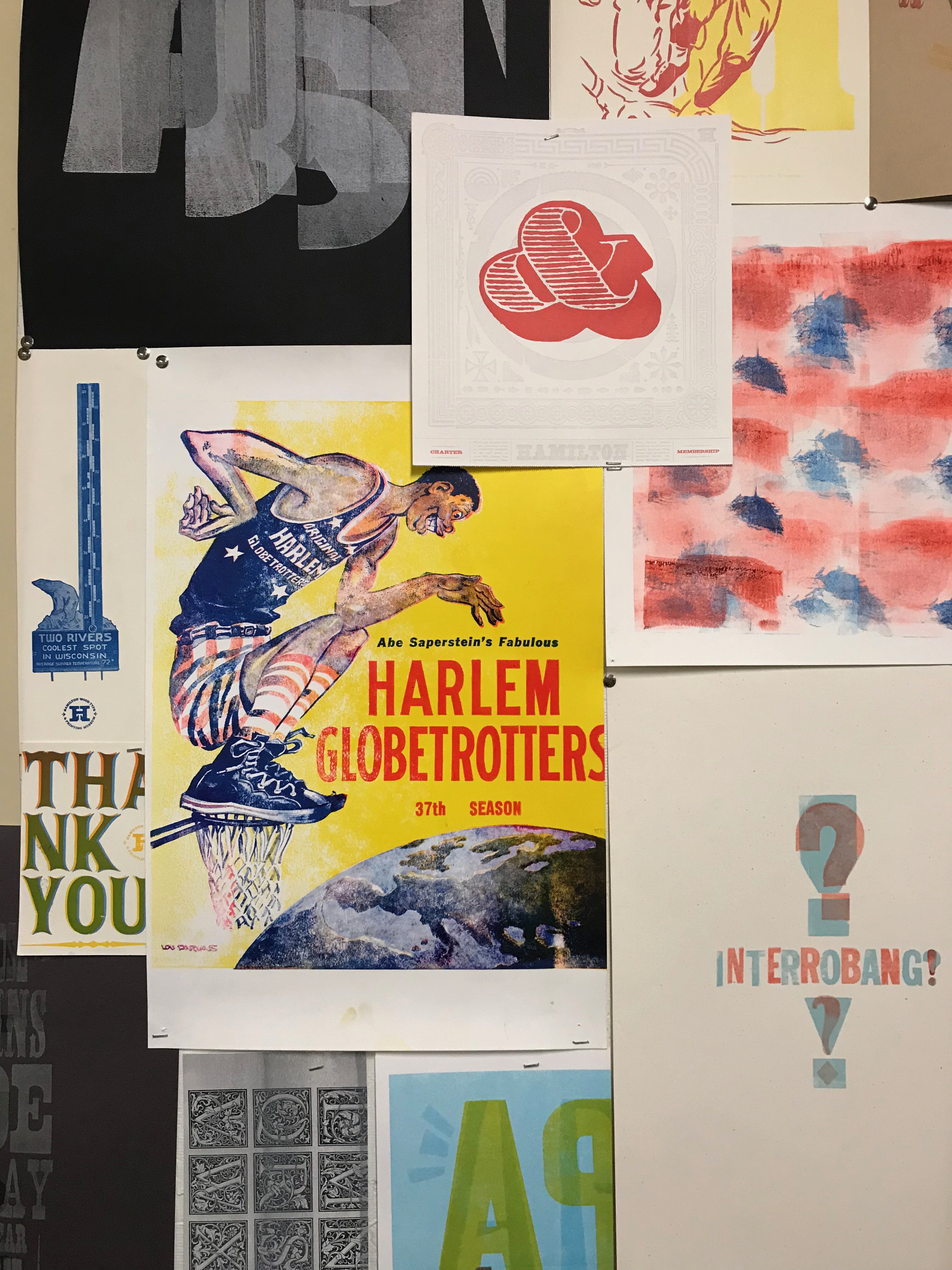
My historical journey ended as I left the museum clutching my purchased prints as mementos of the day. Reflecting back on my trip, the Hamilton Wood Type Museum provides an important window into our own history as print designers. An inspiration destination in the truest sense, I would highly recommend it to anyone interested in printing or the arts/design in general. My quilter mom hasn’t stopped raving about it, and I’m making plans to go back to dig in further in their workshop space.
Like the Two Rivers slogan says “Catch some friendly waves,” if ever in town be sure to catch some great type as well at the Hamilton Wood Type Museum.
References
“History.” Hamilton Wood Type Museum, woodtype.org/pages/history.
–––
Nick Davis
Posted in: Design | Inspiration Destination | Recreational
Tagged: Composure | creative | design | Hamilton Woodtype Museum | inspiration | lettering | local | printing | Two Rivers | wisconsin | Wood type

